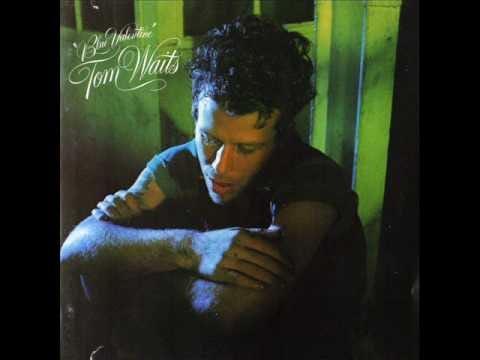Every Tom Waits Song is an email newsletter covering just that, in alphabetical order. Find more info here and sign up to get it sent straight to your inbox:
Like probably many of you, I spent the beginning of the week watching videos of Joni Mitchell’s surprise return to the stage at Newport Folk Festival. If you missed it, start here and try to keep a dry eye:
It got me wondering about Tom and Joni’s careers intersecting. Given that they started around the same time (roughly), in the same state (California), and were even on the same record label (Asylum), overlap between the two is surprisingly slim. They never sang together, never toured together, never even were photographed together that I can tell. They shared a few concert bills, but those were benefit-types gigs with a bunch of acts. Who knows if they even shared a mumbled hello backstage?
Waits in his Asylum days was closest to another singer-songwriter sometimes confused with Joni (if you’re Joe Rogan): Rickie Lee Jones. And a friend of Tom’s from back in the day says Tom wasn’t a Joni fan, though this is secondhand info from decades ago, so I wouldn’t whet your chops too much for some juicy Waits-Mitchell beef:
Ted Quinn: Waits would admonish me on occasion. When I dropped famous people's names in my songs, or the time I wrote a protest against Doug Weston's Troubadour called "Trouble's Door." He didn't like Patti Smith, Joni Mitchell, or Frank Zappa much at the time, all of whom I loved.
The most interesting overlap I found was an unsubstantiated rumor mentioned in a contemporary review of Mitchell’s 1976 album Hejira:
One of the rumours that predated HEJIRA was that Tom Waits would accompany her on several of the numbers. Waits is the blues cut-up whose songs and monologues satirize the night-life and lowlife of Los Angeles with its cheap sex, bad food, and bloodshot eyes. The story turned out to be erroneous, but was nonetheless important because having Waits on the album is exactly the sort of thing Mitchell WOULD have done if she had thought of it. Waits' image is based on his being the very index of sleaziness. He represents what has become of the blues tradition in a society that seems to be collapsing on itself. Mitchell is always searching for anything fashionable in the hopes of discovering something she has lost. She gives the impression of being the sort of person who, were she into religion, would fondle rattlesnakes and speak in tongues - and then quit as quickly as she began. It is of such fleeting enthusiasms and disappointments that her music is made.
Two years after Tom didn’t accompany Joni on Hejira, he released Blue Valentine. It’s maybe the last proper album where he plausibly fits the description in that Hejira review: “the blues cut-up whose songs and monologues satirize the night-life and lowlife of Los Angeles with its cheap sex, bad food, and bloodshot eyes.” 1980’s Heartattack and Vine feels a little transitional, then he fully launched the weirder second part of his career with Swordfishtrombones and never looked back.
Blue Valentine’s almost-title track “Blue Valentines” — singular for the album, plural for the song, kind of like how Chumbawamba’s album was Tubthumper and the song was “Tubthumping” (and doesn’t thumping on a tub sound like percussion Tom would use?) — fits that early sad-sack pianoman image. But it’s not one of the better songs in the vein. As far as weepy ballads go, the album’s “Christmas Card from a Hooker in Minneapolis" and “Kentucky Avenue” run circles around “Blue Valentines.”
Or, maybe more fittingly to the music, they walk slow, sad circles around it:



